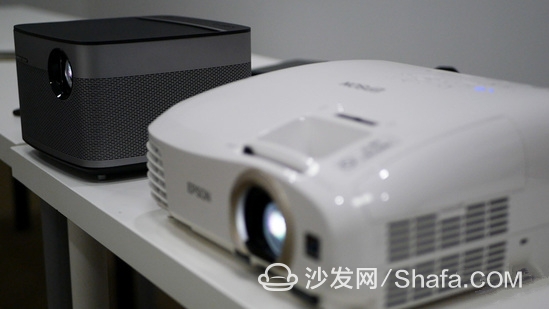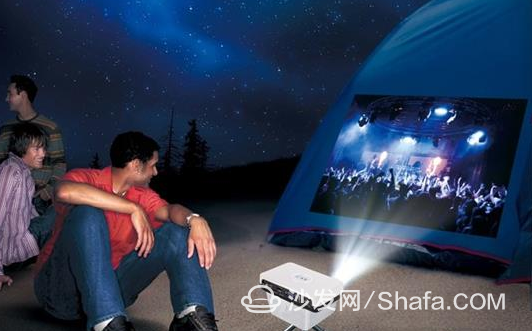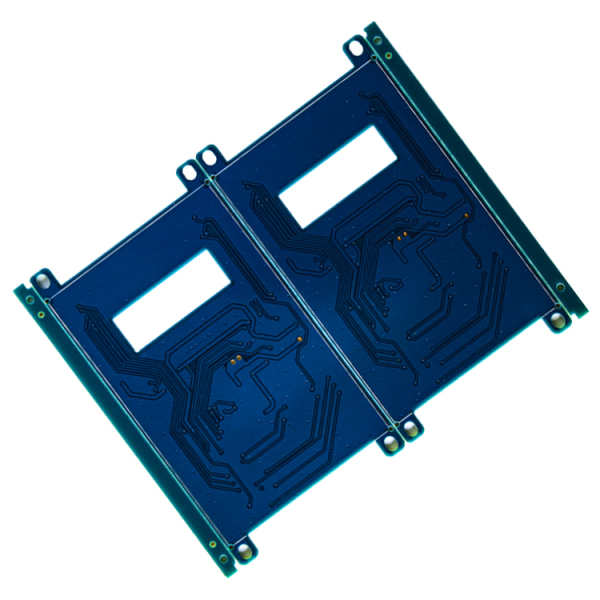Now television products are updated quickly, and many previously unanticipated concepts have been used on TVs, such as curved surfaces, ultra-thin, 4K, 8K, VR, and so on. There is also a hot new product called “non-screen TV†on the market. Many manufacturers think that it can replace the TV, but in essence it is still an LED projector, which is very different from the principle of TV. According to different light sources, the projectors on the market are generally divided into laser, LED light bulbs, UHE light bulbs of three types, of which, laser projectors are too expensive, not suitable for home use, and the use of LED light bulbs intelligent mini projector (also known as no screen TV) has developed rapidly in these two years and it has developed rapidly in the past two years. Some people think that it is small in size and rich in functionality and may replace the traditional bulb projector.

The development of home-use traditional projectors has been very mature. High-pressure mercury lamps are used internally, and the brightness is usually from 1500 lumens to 3,000 lumens. The current brightness of smart microprojectors is usually below 1000 lumens. What impacts the user experience most on the projector is the effect it actually projects on the screen. Then, how about the performance of smart micro-projectors and traditional projectors at the same price level? Today, let's test it.

The price of traditional projectors and smart micro-investments that participated in the test was around 5,000 yuan, and the official brightness was 2200 and 900 lumens respectively. We use an illuminometer to test the actual illuminance of the two projections. The unit of measurement is LUX, where 1LUX is equal to 1 lumen of luminous flux evenly distributed over an area of ​​1 m2 of illuminance. Under normal circumstances, 1LUX is approximately equal to 1 lux of illuminance at a distance of 1 meter, and summer illuminance is 100,000 lux. We tested in a completely black environment. When projecting a pure white image, the illuminance of the conventional projector was 760 LUX, and the illuminance of the smart micro projector was 370 LUX. When displaying colorful landscape photos, the overall details presented by the traditional projectors are more, and the smart micro-cast images are slightly cooler and have higher contrast. When displaying photos in a light-on environment, the saturation of intelligent micro-projections drops a lot and some dark details cannot be displayed. When playing 1080P video, because the smart micro-cast uses LED light source, the screen shot with the camera has a splash screen, but the actual viewing does not flash. From the effect point of view, the traditional projector has a softer image and a wider color gamut. The overall brightness of smart micro-projections is slightly lower and the contrast is higher.

From the overall test results, it is the same price of 5,000 yuan, the traditional projector projection screen rich in detail, higher brightness. Although the display effect of intelligent micro-projection is contaminated by traditional projectors, many advantages of micro-projection are beyond the traditional projectors, such as boot without waiting, low power consumption, long lamp life, and most micro-projections have built-in intelligent systems. You can watch online video content directly. And now the appearance of smart micro-projection is very small, and even appeared in the same size and mobile phone pocket projector, and built-in battery. For example, taking a girl to see open-air movies and watching buddies outdoors with buddies is definitely more portable than traditional projectors. If the budget is the same, would you choose smart micro projector or traditional projector?

Smart TV/box information can focus on smart TV information network sofa butler (http://), China's influential TV box and smart TV website, providing information, communication, TV boxes, smart TVs, smart TV software, etc. Answering questions.
 Introduction to FR4 materials
Introduction to FR4 materials
The FR in FR4 stands for flame retardant, and the number 4 distinguishes this material from other materials in this category. FR4 is a glass fiber reinforced epoxy laminate, which looks like a thin woven fabric board. The term FR4 also represents the grade used to make these laminates. The glass fiber structure provides structural stability to the material. The glass fiber layer is covered with flame-retardant epoxy resin. This brings durability and strong mechanical properties to the material. All these features make FR4 printed circuit boards very popular among electronic contract manufacturers.
 FR4 printed circuit boards are also popular for the following reasons:
FR4 printed circuit boards are also popular for the following reasons:
FR4 is a low-cost material.
It has a high dielectric strength, which contributes to its electrical insulation properties.
The material has a high strength-to-weight ratio and is light in weight.
It is moisture-proof and also has a relative temperature.
The material has good electrical loss properties.
FR4 does not absorb water, so it is also suitable for various marine PCB applications.
The material is yellow to light green, which is very suitable for any application.
All these characteristics make it suitable for various environments.
How is FR4 organized on conventional FR4 printed circuit boards?
FR4 serves as the foundation of any PCB. The material is laminated with a copper foil layer. Use heat and adhesive for lamination. Copper foil can be used to laminate materials from one or both sides.
Tips for choosing the right FR4 material for your FR4 printed circuit board
It is very important to use the correct thickness of material to build FR4 PCB. Thickness is measured in inches, such as thousands, inches or millimeters. There are several things to consider when choosing FR4 material for your PCB. The following tips will simplify your selection process:
Choose thin FR4 materials for building panels with space constraints. Thin materials can support various precision components required to build PCB assembly, such as Bluetooth accessories, USB connectors, etc. They are also suitable for large projects where engineers want to focus on space-saving design.
The thin FR4 material is suitable for applications requiring flexibility. For example, it is ideal to use thin materials for automotive and medical PCBs because these PCBs need to be bent regularly.
Avoid choosing thinner materials for PCB designs with grooves, as this will increase the risk of damage or breakage of the circuit board.
The thickness of the material will affect the weight of the printed circuit board and may also affect the compatibility of the components. This means that the thin FR4 material will logically contribute to the manufacture of lightweight circuit boards, thereby producing lightweight electronic products. These lightweight products are attractive and easy to transport.
 When to avoid FR4 materials
When to avoid FR4 materials
If your application requires any of the following, FR4 material is not the right choice:
Excellent heat resistance: If you want to use PCB in a high temperature environment, it is recommended not to use FR4 material. For example, for PCBs in aerospace applications, FR4 material is not the right choice.
Lead-free soldering: If your customers need RoHS-compliant PCBs, they must use lead-free soldering. During PCBA Manufacturing's lead-free soldering process, the reflow temperature may reach a peak and reach 250 degrees Celsius, and FR4 material cannot withstand it due to its low temperature resistance.
High-frequency signal: When exposed to high-frequency signals, the FR4 board cannot maintain a stable impedance. As a result, fluctuations will occur and may affect the signal integrity of the High Frequency Board.
Due to their popularity and widespread use, today, it is easy to find FR4 PCB materials with various specifications and functions on the market. Such a wealth of choices can sometimes make choices difficult. In this case, it is important to discuss your requirements with the manufacturer.

The development of home-use traditional projectors has been very mature. High-pressure mercury lamps are used internally, and the brightness is usually from 1500 lumens to 3,000 lumens. The current brightness of smart microprojectors is usually below 1000 lumens. What impacts the user experience most on the projector is the effect it actually projects on the screen. Then, how about the performance of smart micro-projectors and traditional projectors at the same price level? Today, let's test it.

The price of traditional projectors and smart micro-investments that participated in the test was around 5,000 yuan, and the official brightness was 2200 and 900 lumens respectively. We use an illuminometer to test the actual illuminance of the two projections. The unit of measurement is LUX, where 1LUX is equal to 1 lumen of luminous flux evenly distributed over an area of ​​1 m2 of illuminance. Under normal circumstances, 1LUX is approximately equal to 1 lux of illuminance at a distance of 1 meter, and summer illuminance is 100,000 lux. We tested in a completely black environment. When projecting a pure white image, the illuminance of the conventional projector was 760 LUX, and the illuminance of the smart micro projector was 370 LUX. When displaying colorful landscape photos, the overall details presented by the traditional projectors are more, and the smart micro-cast images are slightly cooler and have higher contrast. When displaying photos in a light-on environment, the saturation of intelligent micro-projections drops a lot and some dark details cannot be displayed. When playing 1080P video, because the smart micro-cast uses LED light source, the screen shot with the camera has a splash screen, but the actual viewing does not flash. From the effect point of view, the traditional projector has a softer image and a wider color gamut. The overall brightness of smart micro-projections is slightly lower and the contrast is higher.

From the overall test results, it is the same price of 5,000 yuan, the traditional projector projection screen rich in detail, higher brightness. Although the display effect of intelligent micro-projection is contaminated by traditional projectors, many advantages of micro-projection are beyond the traditional projectors, such as boot without waiting, low power consumption, long lamp life, and most micro-projections have built-in intelligent systems. You can watch online video content directly. And now the appearance of smart micro-projection is very small, and even appeared in the same size and mobile phone pocket projector, and built-in battery. For example, taking a girl to see open-air movies and watching buddies outdoors with buddies is definitely more portable than traditional projectors. If the budget is the same, would you choose smart micro projector or traditional projector?

Smart TV/box information can focus on smart TV information network sofa butler (http://), China's influential TV box and smart TV website, providing information, communication, TV boxes, smart TVs, smart TV software, etc. Answering questions.
Why FR4 is used in PCB?
For a long time, the printed circuit board (PCB) has been an integral part of several electronic circuits. Therefore, most electrical engineers involved in the production of these circuit boards are familiar with the different materials used to make them. FR4 is one of the most popular materials used to make Quick Turn PCB. What makes the material popular?

The FR in FR4 stands for flame retardant, and the number 4 distinguishes this material from other materials in this category. FR4 is a glass fiber reinforced epoxy laminate, which looks like a thin woven fabric board. The term FR4 also represents the grade used to make these laminates. The glass fiber structure provides structural stability to the material. The glass fiber layer is covered with flame-retardant epoxy resin. This brings durability and strong mechanical properties to the material. All these features make FR4 printed circuit boards very popular among electronic contract manufacturers.

FR4 is a low-cost material.
It has a high dielectric strength, which contributes to its electrical insulation properties.
The material has a high strength-to-weight ratio and is light in weight.
It is moisture-proof and also has a relative temperature.
The material has good electrical loss properties.
FR4 does not absorb water, so it is also suitable for various marine PCB applications.
The material is yellow to light green, which is very suitable for any application.
All these characteristics make it suitable for various environments.
How is FR4 organized on conventional FR4 printed circuit boards?
FR4 serves as the foundation of any PCB. The material is laminated with a copper foil layer. Use heat and adhesive for lamination. Copper foil can be used to laminate materials from one or both sides.
Tips for choosing the right FR4 material for your FR4 printed circuit board
It is very important to use the correct thickness of material to build FR4 PCB. Thickness is measured in inches, such as thousands, inches or millimeters. There are several things to consider when choosing FR4 material for your PCB. The following tips will simplify your selection process:
Choose thin FR4 materials for building panels with space constraints. Thin materials can support various precision components required to build PCB assembly, such as Bluetooth accessories, USB connectors, etc. They are also suitable for large projects where engineers want to focus on space-saving design.
The thin FR4 material is suitable for applications requiring flexibility. For example, it is ideal to use thin materials for automotive and medical PCBs because these PCBs need to be bent regularly.
Avoid choosing thinner materials for PCB designs with grooves, as this will increase the risk of damage or breakage of the circuit board.
The thickness of the material will affect the weight of the printed circuit board and may also affect the compatibility of the components. This means that the thin FR4 material will logically contribute to the manufacture of lightweight circuit boards, thereby producing lightweight electronic products. These lightweight products are attractive and easy to transport.

If your application requires any of the following, FR4 material is not the right choice:
Excellent heat resistance: If you want to use PCB in a high temperature environment, it is recommended not to use FR4 material. For example, for PCBs in aerospace applications, FR4 material is not the right choice.
Lead-free soldering: If your customers need RoHS-compliant PCBs, they must use lead-free soldering. During PCBA Manufacturing's lead-free soldering process, the reflow temperature may reach a peak and reach 250 degrees Celsius, and FR4 material cannot withstand it due to its low temperature resistance.
High-frequency signal: When exposed to high-frequency signals, the FR4 board cannot maintain a stable impedance. As a result, fluctuations will occur and may affect the signal integrity of the High Frequency Board.
Due to their popularity and widespread use, today, it is easy to find FR4 PCB materials with various specifications and functions on the market. Such a wealth of choices can sometimes make choices difficult. In this case, it is important to discuss your requirements with the manufacturer.
Flame Resistant Pcb,Flame Retardant Class 94V0 Pcb,Resistant Pcb,Flame Resistant Fr-4 Pcbs
HAODA ELECTRONIC CO.,LIMITED , https://www.pcbhdi.com